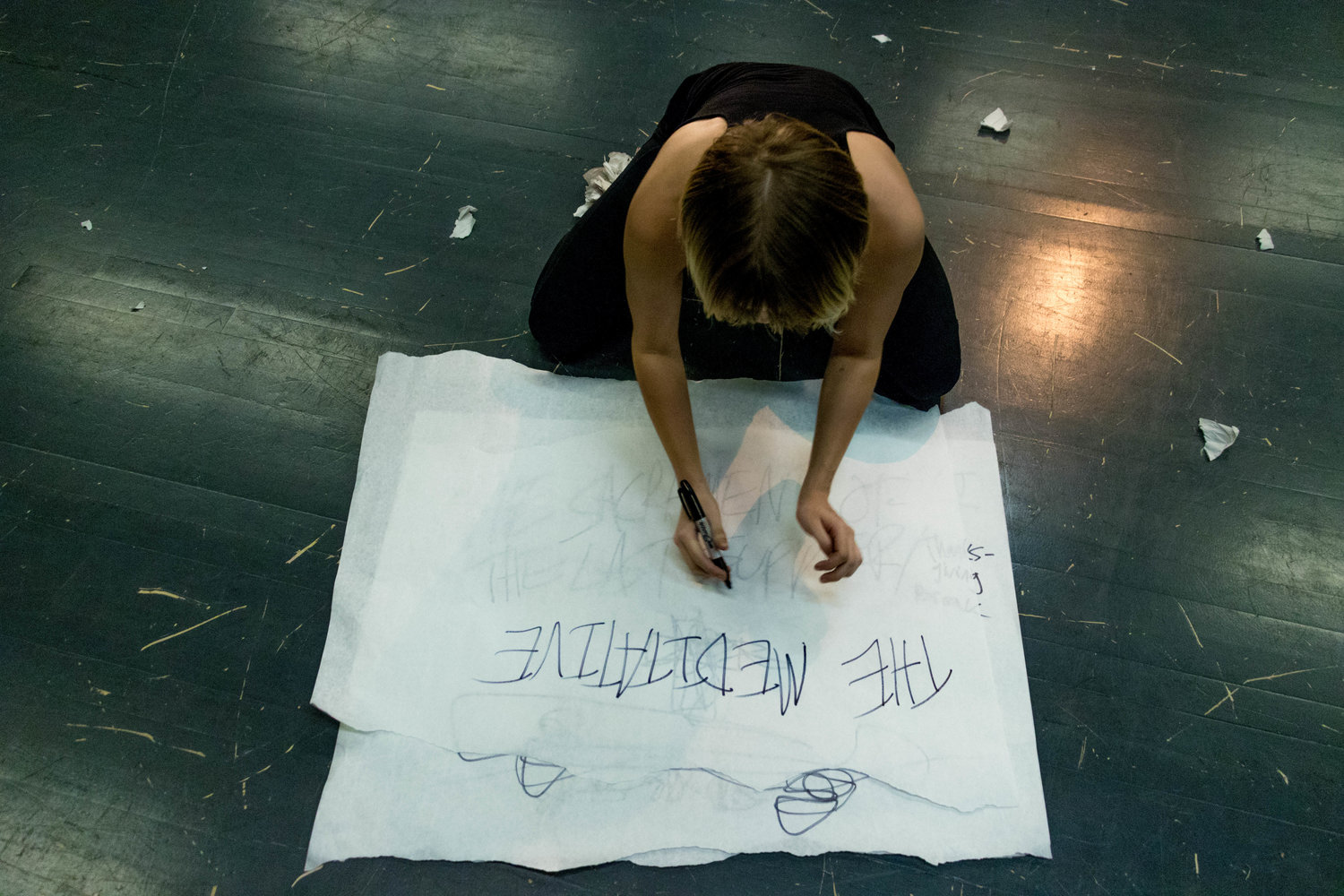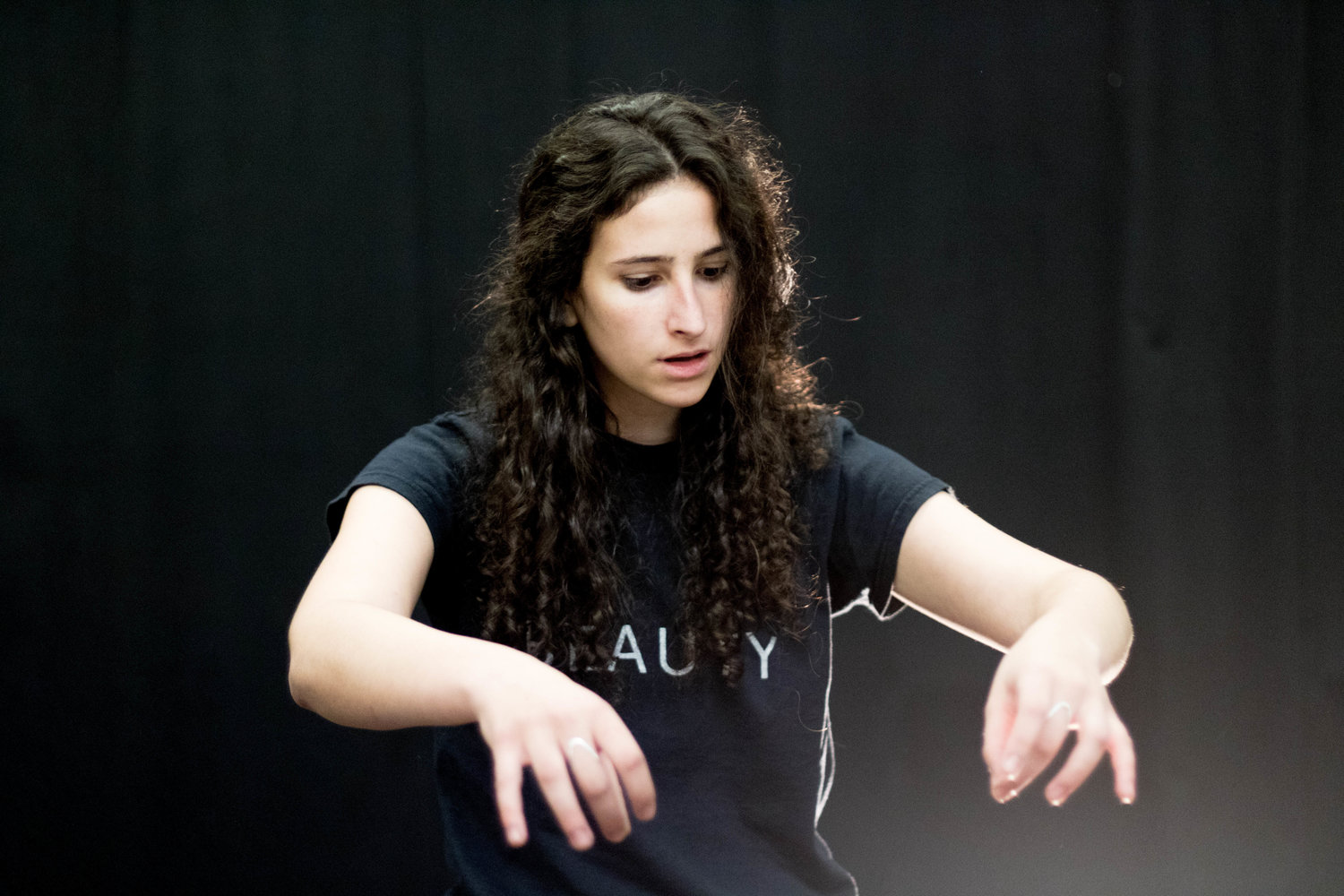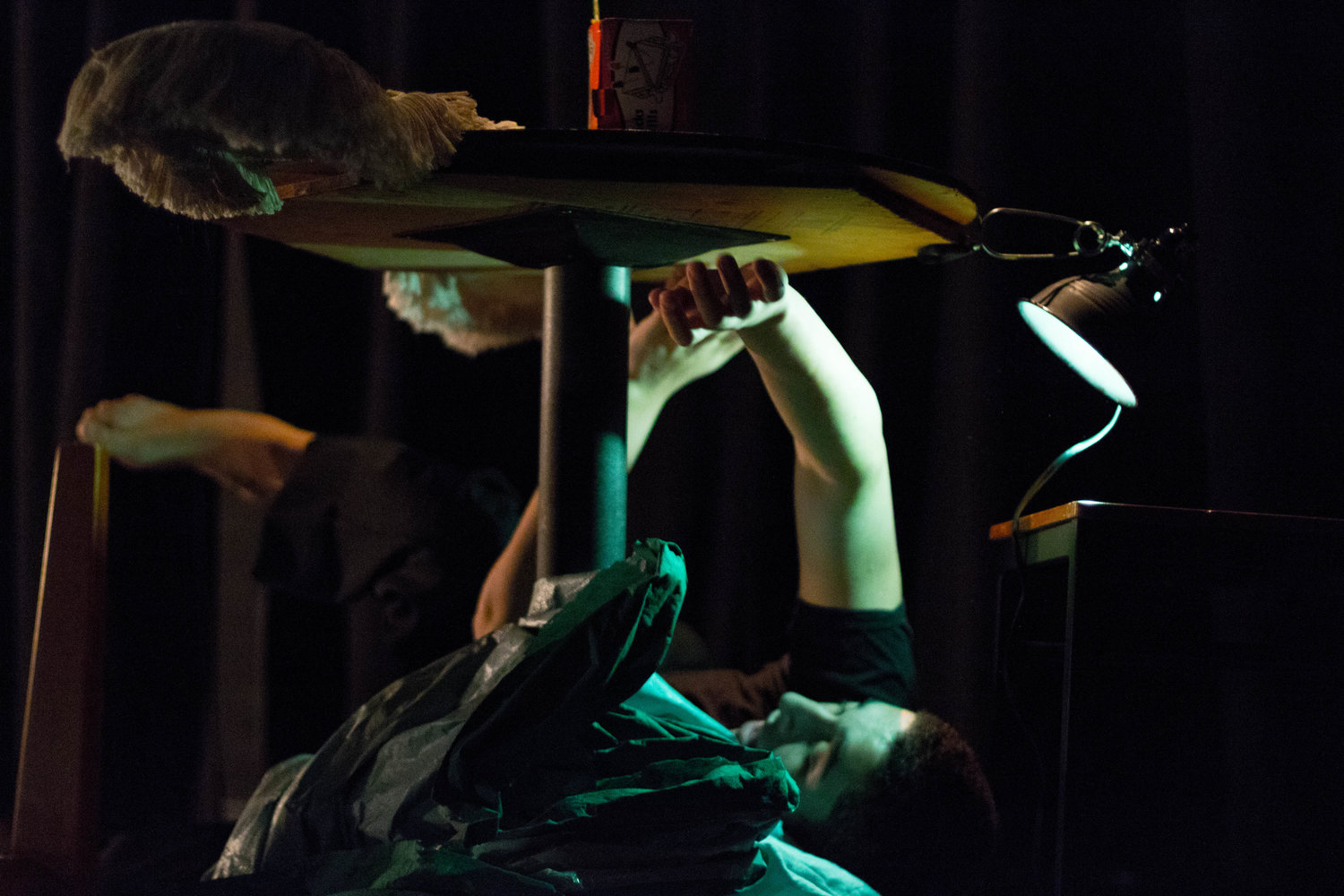
Finley Martin ’19 in The Dali Project. Photo: Dante Haughton ’19
AN ABSURD THING TO DO
By Sarah Rabinowitz ’17
I caught up with The Dali Project director Shea Leavis ‘17 right before the opening of his show, as he was headed to Home Depot to pick up six person-sized cardboard boxes. This raised a lot of questions for me, as that is an absurd thing to do, but I politely stuck to my preplanned interview prompts and let the topic pass by. Leavis and I discussed Salvador Dali’s paintings—the inspiration for the show—and the company’s devising process. As I listened to Leavis speak and asked brilliant and thoughtful follow up questions, I couldn’t stop thinking about his strange errand. Why would he be worrying about boxes when his show was about to open? Upon seeing the show, I quickly realized that both the boxes and the absurd are crucial features of The Dali Project.
The show opens on a large box lit by fluorescent lights at the center of Studio A. In front of the box lies a sheet of paper that labels this moment as the first of three movements. The audience’s attention is quickly captured as actors Eve Gertzman ’20 and Finley Martin ’19 enter the space in unison, untangling clip lights. Lena Schwartz ’19 then emerges with a startling entrance from the box. Ethan Embry ’19 enters last and symbolically slits the throats of the other actors. This abstract and ominous sequence sets the tone for the rest of the piece that follows.

Lena Schwartz ’19 in The Dali Project. Photo: Dante Haughton ’19
The second movement of the show is largely comprised of actors constructing and deconstructing the space. In one particularly captivating moment, the actors arrange an assortment of found objects into a long table. We are then treated to a Thanksgiving scene that weaves together images from Dali’s The Sacrament of the Last Supper and the actors’ stories from their own Thanksgiving experiences.
In the third movement, the actors they interact with four roses reminiscent of Dali’s painting The Meditative Rose. Each actor performs a ritual with their rose before placing it on a corner of the cardboard box and meeting center stage for a bow. Their complimentary movements showcase the strong ensemble dynamic present between the cast members, a dynamic that is in large part due to The Dali Project’s rehearsal process.

Ethan Embry ’19 in The Dali Project. Photo: Dante Haughton ’19
When the company began rehearsing The Dali Project, the piece had no content or form. Leavis began the process by bringing in paintings by Dali, and his actors participated in free word association exercises based on those paintings. They then used those words as inspiration for short devised scenes, which they wove together to create the final play. It wasn’t until the final week of rehearsal that they found the end to their show: a speedy revisiting of all three movements in reverse order. This conclusion comes as a surprise to the audience, who are conditioned to assume that the show ends with a bow.
Throughout The Dali Project, the audience is confronted with actions like the final rewind that challenge our notions of traditional theater. Time, space, and sound are manipulated to create a visceral experience inspired by Dali’s work, one in which even a person-sized box can become a vehicle for exploration and expression.
***
Sarah Rabinowitz ’17 is a senior theater major and a staff writer for the Skidmore Theater Living Newsletter.
PHOTO GALLERY
Production Credits
Directed by: Shea Leavis ’17
Stage Managed by: Nina Slowinski ’19
Ensemble: Ethan Embry ’19, Eve Gertzman ’20, Finley Martin ’19, and Lena Schwartz ’19















